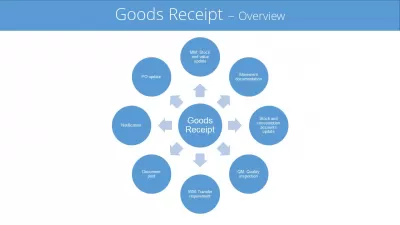How To Learn SAP Inventory And Basic Warehouse Management Basics?
- Research is more important than ever
- Inventory optimization
- Difference Between Inventory Management and Inventory Optimization
- Expand your horizons with Multi-Level Inventory Management Optimization (MEIO)
- Warehouse management system
- Implementation goals
- The unconditional benefit of the S / 4HANA course Inventory and basic warehouse management from Michael Management
- The purpose of this course is to:
- Frequently Asked Questions
Research is more important than ever
Any company leader will agree that inventory optimization is a very complex component of supply chain management, influenced by many factors, including social trends, natural phenomena, politics, economics, and competition (to name a few). The recent pandemic has led to global disruptions in supply chains and has highlighted the fragility of outdated supply chain management practices.
Therefore, it is very important to follow the trends in SAP Inventory and warehouse management now. This will enable you to have a successful business today.
The best recommendation for this is the S/4HANA Inventory and Basic Warehouse Management course from Michael Management. This course will give you a lot of useful and necessary information. Let's get started on this together!
Inventory optimization
It is a technique that ensures that the necessary stocks are available to meet demand, while avoiding the formation of excess stocks. This technique also forms a certain reserve buffer in case of unforeseen situations. Ideally, various optimization methods should support not only the response to risks and opportunities, but also the anticipation and preparation for risks.
Difference Between Inventory Management and Inventory Optimization
Both of these aspects are included in the same operations in the supply chain related to inventory, but if we talk about definitions, then the general category will be inventory control, which includes inventory management, and already within the framework of inventory optimization.
- Inventory management aims to achieve high performance and efficiency targets for all inventory operations. Modern supply chain planning technologies support these processes by providing logistics managers with greater transparency across the supply chain. The Internet of Things (IoT) and cloud devices and assets can be automated to improve manufacturing efficiency. Manufacturing, warehouse and logistics processes are also becoming more efficient through the use of intelligent technologies such as artificial intelligence (AI), machine learning, robotics and robotic process automation.
- Inventory optimization is a subgroup of inventory management operations whose main goal is to increase profits and minimize losses. Overstocking leads to wastage and waste. These items take up space, are out of date, and are often not in demand or have to be sold at discounted prices. On the other hand, as we saw during the pandemic, when it comes to inventory, shortages and unexpected demand are two sides of the same coin, and costs can manifest themselves as loss of potential profits and damage to the brand. Thus, the goal of inventory optimization is to best predict demand and maximize financial results for the company.
Expand your horizons with Multi-Level Inventory Management Optimization (MEIO)
Complex (especially global) supply chains benefit from MEIO solutions. These solutions are based on traditional inventory optimization principles, but use modern cloud-based supply chain management technologies. This is how MEIO solutions get a centralized view of global real-time operations. An efficient MEIO solution recommends optimal stock levels for each link (or tier) in the supply chain by simultaneously optimizing stock balance across multiple locations.
The MEIO approach allows manufacturers to analyze demand forecasts based on a comprehensive view of the supply chain. As companies grapple with the Amazon effect, MEIO's solutions are helping them manage today's geographically dispersed and smaller inventory silos.
Warehouse management system
WMS is an information system that automates the management of warehouse business processes of a specialized enterprise.
The architecture of the automated warehouse management information system is based on a three-level principle.
- the first component is a part visible to the user - a human-machine interface - a client application, with the help of which the user enters, changes and deletes data, gives requests for performing operations and requests for data selection (receiving reports); this component can be accessed on a computer, TSD, tablet, smartphone;
- the second component (part of the system hidden from users) is the database server that stores data. The user, through the client application, initiates the request procedure for selecting, entering, changing or deleting data in the database (DB);
- the third component - business logic (tasks or processes - specialized processing programs) performs user-initiated data processing, and returns the processed data to the database, informing the user through the screen of the client application about the completion of the requested processing.
Implementation goals
- active warehouse management;
- increase in the speed of collection of goods;
- obtaining accurate information about the location of the goods in the warehouse;
- effective management of goods with limited shelf life;
- obtaining a tool to improve efficiency and develop processes for processing goods in a warehouse;
- optimization of the use of warehouse space.
The unconditional benefit of the S / 4HANA course Inventory and basic warehouse management from Michael Management
If you are looking for the answer to the question - how to learn SAP, then the answer is very simple. Start learning the S/4HANA course Inventory and basic warehouse management today. Then tomorrow you will be closer to becoming a professional.
In this course, we will cover several aspects of SAP S/4HANA Inventory and Basic Warehouse Management. We will see how to integrate inventory management with other core processes to streamline the transition in product lifecycle management from operational purchasing to invoice and accounts payable management. We will look at creating a goods receipt with the central transaction MIGO and its effect on inventory levels in SAP Inventory Master Data tables.
The purpose of this course is to:
- Visualize different inventory management options
- Learn the steps of order monitoring
- Master the process of receiving goods in SAP
- Understand the difference between WM and EWM
This training is suitable for Consultants, End Users, Executives and Managers, IT/Business Analysts, Project Managers, Project Team Members.
There will be a Formal Final Exam upon completion of the course and upon successful completion of this course, you will be certified in S/4HANA Inventory and Basic Warehouse Management. Register now!
Frequently Asked Questions
- What are the key areas to focus on for mastering SAP Inventory and Basic Warehouse Management?
- Mastering SAP Inventory and Basic Warehouse Management involves focusing on inventory control, understanding warehouse operations within SAP, mastering material movement processes, and learning about stock valuation and optimization.

